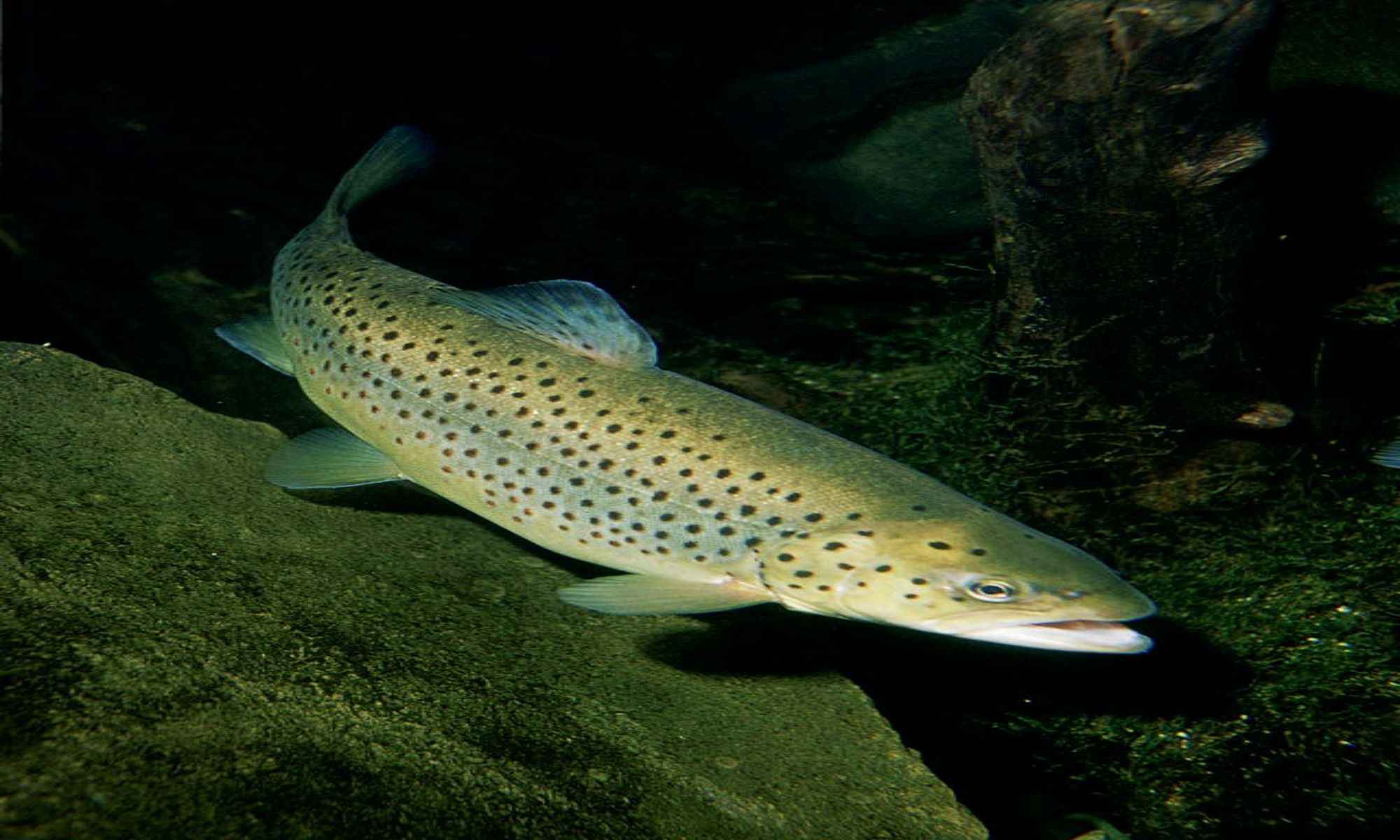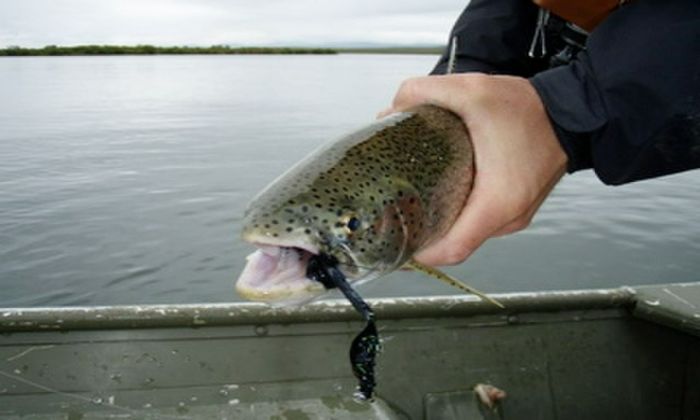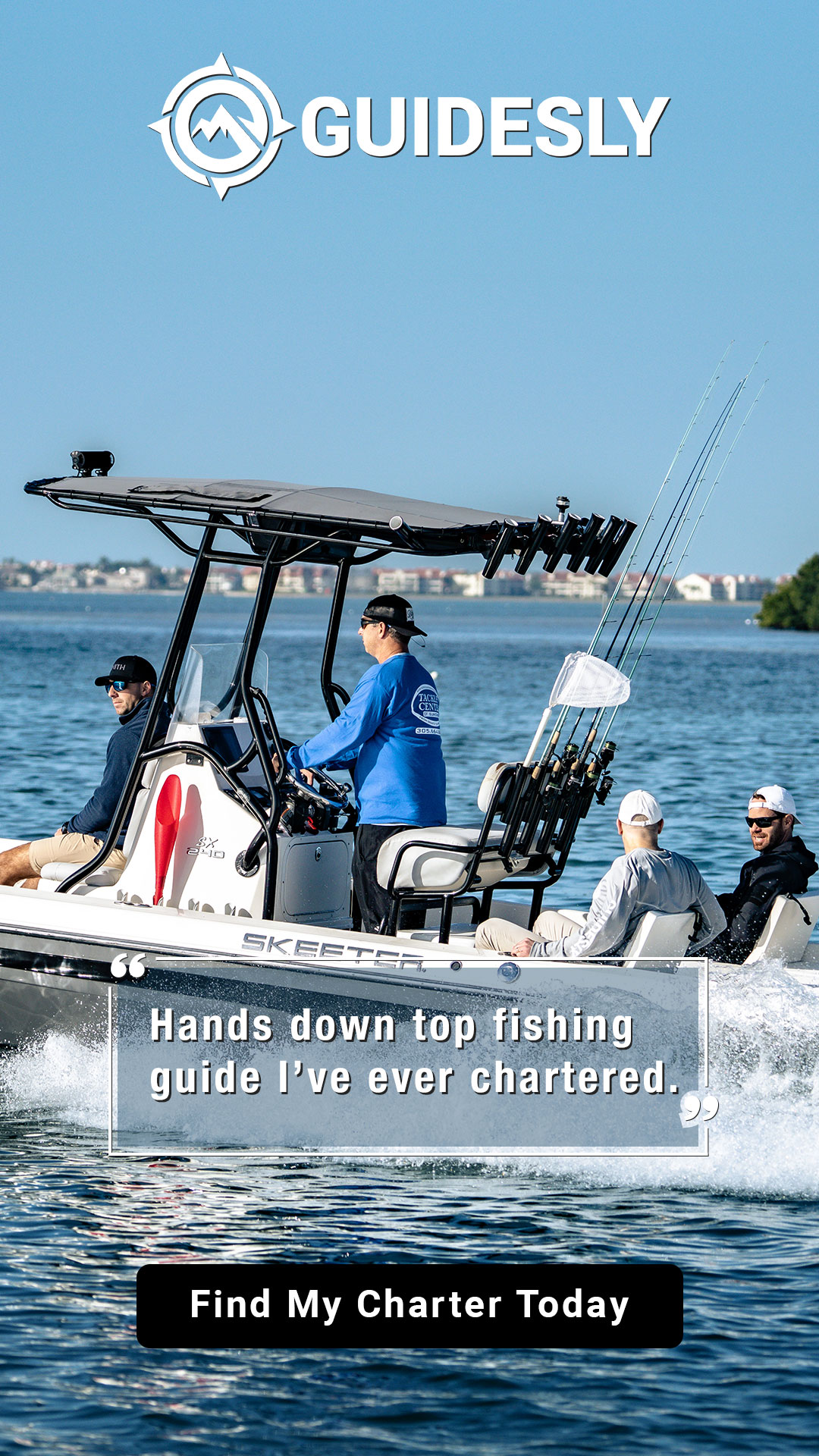5 Tips So Trout Won't See You
Trout are easily spooked, so being stealthy is a must when catching this crowd favorite!

Anglers frequently explain why trout do not catch on to the lure often. Sometimes it’s because of the pattern or presentation, the climate, or the water temperature. While those reasons might be true, sometimes the answer is very simple: the trout have been spooked and hidden away.

Below are 5 fishing tips to avoid spooking them away on your next fly fishing trip.
1. Use the Right Equipment
The fishing rod and reel are essential components of a trout fishing setup. Spinning outfits and fly fishing outfits are the two most popular types. Though less common for casting in streams and lakes, anglers can utilize light spin casting or baitcasting rods and reels. Most trout captured weigh no more than a couple of pounds. For most trout fishing situations, a 6′ light action spinning rod with a 1000 series reel spooled up with a 4-pound test line would suffice.

This type of trout fishing fly rod and reel is very flexible. A lightweight lure and bait can be cast in streams, ponds, lakes, and high water without issue. While still handling a respectable fish, it will allow lesser fish to put up a good fight. Anglers can also use this to troll light lures, though switching to 6 or 8-pound test lines may be necessary. The tackle should be slightly heavier if you plan to catch larger fish.
2. Blend In With Your Surroundings
Choosing the proper clothing is the key to being well-prepared for a day on the water. Generally, the months of June, July, August, September, and October are when trout streams are most likely to have sparkling clear water.
When the water is clear, bright colors should be avoided since they make any fly angler easily visible to fish, alerting them to your presence and making them hide immediately. Additionally, fish can see actions like casting more clearly when an angler is wearing light or brightly colored apparel. Choose shades of brown, olive, or camouflage while fishing for trout in clear streams to help you blend in with your surroundings.
3. Get to Know Your Target and Locate the Fish First
No matter how effectively you cast, what fly you're using, or how many hours you spend fishing, you have very little chance of hooking a trout when you randomly cast it into the water. It's no accident that bigger fish in any river typically hide in locations where casting is most challenging, such as along current seams, behind sweepers, and against undercuts. The necessities of survival have taught them to seek out areas where they can gather food with the least energy expended while hiding from predators or sight fishing enthusiasts.
Once you are in position, avoid mindlessly casting right away. Observe their feeding behavior first. When trout feed, they slither into dark, slow-moving water and position themselves close to obstructions, such as bushes, boulders, and downed logs. Meanwhile, a trout that feeds on the surface typically leaves an air bubble.
4. Move Slowly and Be Quiet
Spooking the trout is a very genuine problem, and it is something any angler should avoid. They can both be clever and naive, but once they have been rattled, they would be extremely wary of their surroundings, making fishing for them difficult for you. Never let your shadow get close to a potential trout hiding spot.

It will be lost for the day if you drop that weight and worm over the fish's head. Be quiet as you move both onshore and in the water, and avoid letting the hook and weight touch the water anywhere close to the fish. Since fish have a sense of smell, keep all scents out of the water. Except to set the hook, never pull the line through the water; it will appear strange and alert them of your presence.
5. Make Your Cast Count and Practice, Practice, Practice
A brook trout would not be alarmed by a poor copy of a bait drifting over him. However, a careless cast or a dragging fly will. To fix this, make a test cast first. When fishing upstream directly, cast your fly immediately below the fish and observe how it floats. Maybe there are currents you did not see that pull it downstream or sideways. Try it again after moving to your left or right. Increase the tippet a bit. Wait until you're sure you'll obtain a drag-free float before casting over the fish.
If you are located upstream, start your cast further up from where the fish is lying and beyond its feeding lane. Then, lower your rod and drag your fly into the fish’s path, allowing it to begin drifting. If the drift does not seem reasonable, pull the fly under the surface and bring it toward you before the fish detects it. If necessary, you can adjust your location, add a tippet, and retry until you have it.



